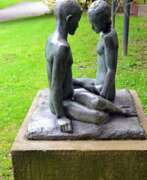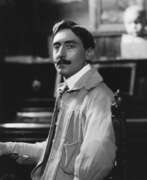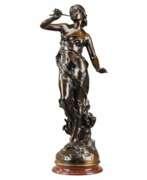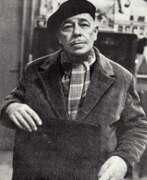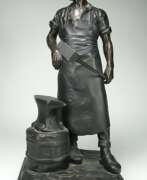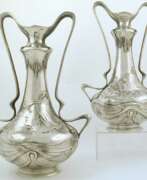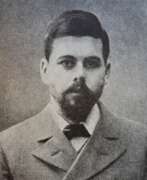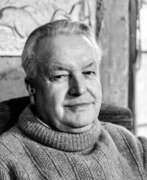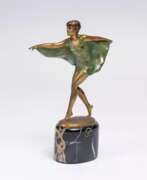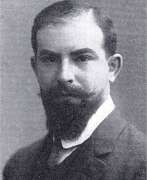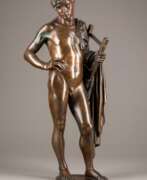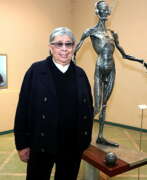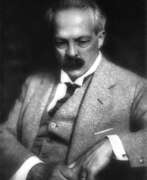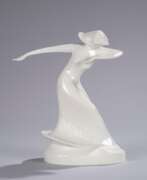Portrait sculpture Modern art


Wäinö Waldemar Aaltonen was a Finnish artist and sculptor, celebrated for his contributions to the cultural landscape of Finland, particularly during the early years of the nation's independence. Born in 1894, Aaltonen's works are distinguished by their nationalist themes and monumental scale, often reflecting the spirit and identity of Finland. His artistic journey was notably influenced by a trip to Italy in 1923, where he encountered cubist and futurist art, elements of which he integrated into his own work.
Aaltonen's sculptures are key features in Finland's public spaces, including the well-known statues in the House of Parliament and numerous works in Turku, such as the "Lily of Turku" and a statue of the runner Paavo Nurmi. His mastery is also showcased at the Wäinö Aaltonen Museum of Art in Turku, which houses a significant collection of his sculptures, paintings, and drawings. This museum not only celebrates his legacy but also serves as a central repository for his extensive works, donated by Aaltonen himself.
For those interested in exploring Aaltonen's work and the impact of Finnish sculpture, a visit to the Wäinö Aaltonen Museum of Art is invaluable. The museum provides a comprehensive view of his artistic evolution and contributions to Finnish art. For updates on exhibitions and events related to Wäinö Aaltonen, consider signing up for notifications through the museum's mailing list, ensuring you stay informed about new insights and offerings related to this pivotal artist.


Jussuf Abbo, originally Jussuff Abbu, was a Palestinian-Jewish artist active mainly in Germany.
In 1937 in Germany his work had been branded as "Degenerate Art" and removed from all public museums. Much of the work removed was later destroyed by the Nazi regime.


Rudolf Alexander Agricola was a German sculptor. In the 1930s he studied with Gerhard Marcks in Halle and in Stedel with Richard Scheibe. In 1937 he followed Richard Scheibe to Berlin as a graduate student. He worked there until the end of the Second World War and received several awards.
Rudolf Agricola is known for his bronze sculptures with full figures and nudes. His work was influenced by Georg Kolbe and Aristide Maillol.


Adam Antes was a German painter, sculptor and graphic artist. He worked mainly as a sought-after portrait painter and also designed a single-wing aircraft.
Adam Antes was inspired by the styles of Auguste Rodin, Bernhard Hoetger and Wilhelm Lehmbruck. From time to time he turned to graphics. His work was part of the sculpture in the art competition at the 1932 Summer Olympics.
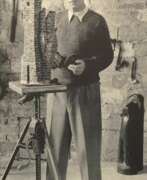

Otto Baum is a German sculptor and university lecturer and member of the German Artists' Association.
He studied painting at the Stuttgart Academy of Art and sculpture at the same time. From the mid-1930s, the National Socialists who came to power in Germany forbade Baum to exhibit or even work, and he was persecuted as a representative of "degenerate art".
After the war, Otto Baum was appointed to teach at the Stuttgart Academy of Art and was regarded as the most progressive and extremely critical teacher among the young students at the academy.
Otto Baum is considered one of the most important representatives of classical modernism, who had a significant influence on European sculpture in the second half of the 20th century both through his work and as a teacher.
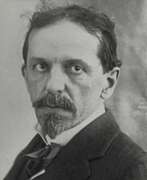

Richard Walter Bock was an American sculptor and associate of Frank Lloyd Wright. He studied art in Europe: at the Berlin Academy and the École des Beaux-Arts in Paris.
Richard W. Bock won a competition to create an exterior sculpture at the Indianapolis Public Library in 1892. He became head of the sculpture department at the University of Oregon in 1929.
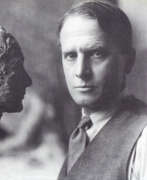

Ernesto de Fiori was a German artist of the first half of the twentieth century of Italian-Austrian origin. He is known as a sculptor, draughtsman, and secular portraitist and is considered one of the leading artists of the Weimar Republic.
Ernesto de Fiori made a name for himself as a sculptural portraitist in Berlin during the so-called "Golden Twenties". He portrayed such celebrities as movie actresses Greta Garbo and Marlene Dietrich, boxer Jack Dempsey, Field Marshal Paul von Hindenburg. In 1936, the artist emigrated to Brazil and took up journalism. In 1937, the Nazi campaign to expose "degenerate art" led to the removal of his sculptures and graphics from German museums.
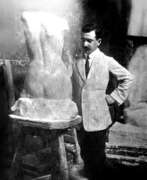

Ángel María de Rosa was an Argentine sculptor and philanthropist.
As a teenager he entered the Society for the Encouragement of Fine Arts in Buenos Aires, and then transferred to the Bon Marché Academy of Art. He then travelled to Italy, where he studied at the Florence Academy and at the Institute of Fine Arts in Rome.
In 1943, he donated most of his own works, as well as much of the art that Ángel María de Rosa had collected in Europe, to his hometown, which led to the creation of the Municipal Museum of Fine Arts of Junín.
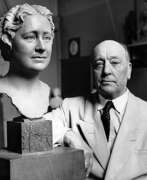

William Reid Dick was a Scottish sculptor known for his innovative stylisation of form in his monument sculptures and simplicity in his portraits. He became an Associate of the Royal Academy in 1921, and a Royal Academician in 1928. Dick served as president of the Royal Society of British Sculptors from 1933 to 1938. He was knighted by King George V in 1935. He was Sculptor in Ordinary for Scotland to King George VI from 1938 to 1952 then held the post under Queen Elizabeth until his death in 1961.


Samuel Perry Dinsmoor was an American artist and sculptor. Dinsmoor's most famous work, Garden of Eden, is an intricate installation of over 200 concrete sculptures including Adam and Eve, a serpent and various animals. The sculptures are arranged as a series of scenes depicting the creation story told in the Bible.
Samuel Perry Dinsmoor began his career as a teacher but later turned to art. During his career he created many sculptures and monuments, including a statue of Abraham Lincoln which stands in front of the courthouse in Lucas.
Dinsmoor's work has been featured in many exhibitions and is considered an important example of outsider art. His sculptures are known for their detailed and intricate construction and use of unconventional materials.
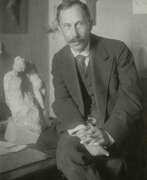

Vladimir Nicholaevich Domogatsky (Russian: Владимир Николаевич Домогацкий) was a Russian sculptor, teacher, and Honored Art Worker of the RSFSR, known for his contribution to the development of Soviet sculpture. Born in Odessa in 1876 and spending his early years in Switzerland and Ukraine, Domogatsky's life and career were predominantly centered in Moscow. He studied law at Moscow University and then took up sculpture under the tutelage of S.M. Volnukhin and S.V. Ivanov. Domogatsky's work was greatly influenced by the works of P. P. Trubetskiy, Auguste Rodin, the animalist painter R. Bugatti and others. Travels to Paris and Italy contributed to the improvement of his skills, especially in working with marble.
Domogatsky's work was diverse: genre, animalistic and portrait sculpture. Notable works include Boy in a Coat (1904), Portrait of an Old Actor (1913), and Portrait of Lev Shestov (1917), demonstrating his skill in merging Russian sculptural traditions with Western European influences. Teaching at the Moscow Institute of Fine Arts, organizing and participating in exhibitions all attest to his significant influence on the Soviet art scene. His works are held in prestigious museums, including the State Tretyakov Gallery, reflecting his enduring legacy in Russian art.
For collectors and experts, Domogatsky's sculptures represent a unique combination of historical and cultural narrative, embodied in the subtlety of his craftsmanship. His contributions to monumental propaganda and theoretical developments in sculpture further cement his status as a key figure in 20th century Soviet art.
To keep abreast of exhibitions and auctions featuring works by Vladimir Nikolayevich Domogatsky, we encourage you to subscribe to our updates. By subscribing, you will be the first to know about new sales and auction events related to this esteemed artist and enrich your collection with items of significant historical and artistic value.


Fritz Fleer is a German painter and sculptor. He studied at the Hamburg University of Fine Arts in the class of Edwin Paul Scharf.
As independent artist, Fritz Fleer has been creating works for urban planning since the 1950s; in Hamburg he was commissioned for 17 sculptures by the municipal housing company SAGA.


Adrien Étienne Gaudez was a 19th century French sculptor. He studied sculpture under François Joffroy at the Ecole des Beaux-Arts in Paris.
Adrien Étienne Gaudez is known for his monumental figures cast in bronze.
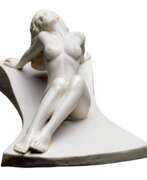

Peter Hohberger is a German actor, painter, and modernist sculptor.
He is considered one of the sculptors of the "New School" artistic movement that developed in France after 1945. Hohberger's exquisite sculptures of female nudes are a success and are found in many collections around the world.


Rudolf Kaesbach was a German sculptor.
Rudolf Kaesbach studied at the academies of Hanau (drawing), Paris (foundry) and Brussels. In Düsseldorf he ran a workshop in which he cast his own models.
After 1904, Rudolf Kesbach presented a series of life-size marble figures to the public at exhibitions in Berlin, Düsseldorf and Malmö. Later he devoted himself increasingly to the depiction of nude women. Much of his work took him beyond Art Nouveau to Art Deco.
In 1939, 1940, 1941 and 1943, Kiesbach exhibited his sculptures at the Great German Art Exhibitions in Munich. These exhibitions were representative under National Socialism.
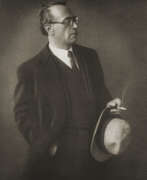

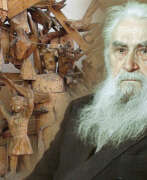

Sergey Timofeyevich Konenkov (Russian: Серге́й Тимофеевич Конёнков) was a Russian and Soviet sculptor, often hailed as "the Russian Rodin." Born into a peasant family in 1874 in the Smolensk region, he pursued his passion for art, studying at the Moscow School of Painting, Sculpture and Architecture, and later at the Academy of Arts. Konenkov's work was deeply influenced by his roots, leading to the creation of sculptures that blended Russian folklore with Hellenic and Russian culture.
Konenkov's career took a significant turn when he moved to the United States in 1923, where he stayed for 22 years. This period was marked by his exploration of biblical themes, creating renowned works that depicted Jesus Christ, Christian prophets, and apostles. His notable commission of a sculpture of Albert Einstein by Princeton University highlights his prominence during this period. Upon his return to the USSR under Stalin's directive, Konenkov continued his artistic endeavors, receiving numerous accolades including the golden star of the Hero of Socialist Labour and the order of Lenin.
His legacy includes a vast collection of works, with some of his most famous sculptures housed in the Tretyakov Gallery and the museum dedicated to his works in Smolensk, established posthumously in 1970. The museum's foundation was laid with forty of his creations, showcasing his significant contribution to Russian and Soviet art.
For collectors and experts in art and antiques, Konenkov's sculptures represent a unique fusion of cultural narratives and a testament to his innovative approach to sculpture. His works continue to be celebrated for their depth, creativity, and influence on the art world.
To stay updated on sales and auction events related to Sergey Timofeyevich Konenkov's work, sign up for updates. This subscription ensures you're informed about the latest opportunities to own a piece of Russian and Soviet art history.


Hermann Joachim Heinrich Pagels was a German sculptor. He studied at the Academy of Fine Arts in Berlin from 1894 to 1900.
In 1911, Hermann Joachim Heinrich Pagels designed a porcelain portrait statuette of Prince Wilhelm of Prussia.
During National Socialism, Pagels became famous for his busts of Adolf Hitler and other Nazis.
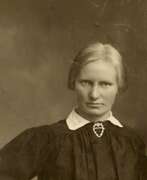

Ingeborg Plockross Irminger was a Danish artist who is remembered both for her sculptures and for the miniature porcelain statues of animals and human figures she designed while working for Bing & Grøndahl. A bronze cast of her 1903 bust of the writer Herman Bang was installed on Sankt Annæ Plads in Copenhagen in 2012.


Luis Potosi, full name Luis Aníbal Potosí Suárez, is a modernist sculptor from Ecuador known for his abstract carved wood sculptures.
Potosí studied at the Daniel Reyes Institute of Fine Arts, where he honed his knowledge of art and specialized in sculpture. He graduated in 1957 and founded his own studio school, where he taught more than a hundred craftsmen.
The sculptor's work has gained a place in the cultural sphere of Ecuadorian society, contributing to the development and promotion of tourism in the country. Luis Potosi has exhibited in various cities in America and Europe.
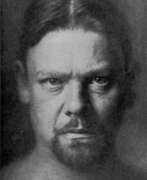

Rudolph Karl Alexander / Sascha Schneider was a German painter and sculptor. Schneider was born in Saint Petersburg in 1870. During his childhood, his family lived in Zürich, but following the death of his father, Schneider moved to Dresden, where in 1889 he became a student at the Dresden Academy of Fine Arts. In 1903, he met best-selling author Karl May, and subsequently became the cover illustrator of a number of May's books. A year later in 1904, Schneider was appointed professor at the Großherzoglich-Sächsische Kunstschule Weimar.


Ernst Seger was a German sculptor and medalist, professor.
Seger studied at the Breslau School of Art with Robert Hertel and Christian Behrens, he also studied in Paris, and from the late 1880s he first executed large commissions for public monuments. The sculptor worked in Auguste Rodin's studio in Paris before opening his own studio in Berlin. Ernst Seger became famous primarily for his Art Nouveau female nudes.


Karl Peter Hugo Siegwart was a Swiss sculptor and medallist. He studied at the Academy of Fine Arts in Munich with Max von Widnmann and in Paris at the Académie Julian with Henri Chapu.
Hugo Siegwart's work extended to monumental sculptures, portrait busts, small sculptures and building reliefs, while striving for the most accurate and realistic reproduction of nature.
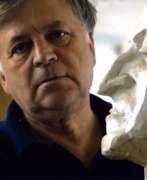

Manfred Sihle-Wissel ist ein deutscher Bildhauer.
Seine Lehrer waren Edwin Scharff und Hans Martin Ruwoldt. Seit 1981 wohnt und arbeitet er in Brammer bei Rendsburg (Schleswig-Holstein).
Zu Manfred Sihle-Wissels Werk gehören Porträts, Skulpturen und Aquarelle.


Arthur Storch was a German sculptor and porcelain modeller.
Born and raised in a family of artists, Storch was trained as a modeller at the Volkstädter porcelain factory and then studied at the Bavarian Academy of Fine Arts. Having established himself as a sculptor and medallist, he worked in Munich and Hamburg, and contributed to architectural jewellery in cities such as Wiesbaden and Hamburg. His legacy includes around 100 drawings, 12 medals and 40 sculptures.


Jaroslav Vacek was a Czech and Slovak artist and sculptor.
Jaroslav Vacek was one of the leading representatives of post-war artistic modernism. His work focused on the human figure, creating strongly geometricized or abstracted torsos. Vacek mainly created sculptures for public spaces. His works are represented in the National Gallery in Prague and in many other exhibition galleries.


Fritz von Graevenitz was a German painter, sculptor and university lecturer. He studied fine art at the Academy of Fine Arts in Stuttgart.
The National Socialists promoted Fritz von Grevenitz as an artist and represented him several times at the Great German Art Fairs in Munich.
Fritz von Grevenitz mainly created monuments, cenotaphs, fountains, portraits and animal figures, most of which are in public places in German cities.


William Zorach, born Zorach Gorfinkel, was a Jewish American sculptor, painter, printmaker, and educator.
Zorach's family emigrated from Lithuania to the United States when he was four years old. He trained as a lithographer and studied painting at the Cleveland Institute of Art and in Paris, where he painted in bright colors in the manner of Henri Matisse and other artists of the Fauvism movement. Returning to the United States in 1912, Zorach became one of the first to introduce European modernist movements to the country. And later began to work extensively with sculpture.
William Zorach was a pioneer in the art of direct carving and is unique in that he often used very hard, colored and patterned stones like granite boulders he found while walking. Zorach's mature works are characterized by monumental forms and skillful use of the natural color, veining and texture of stone and wood. He often left traces of the sculptor's tools to enrich the surface.
Zorach was one of the best known and most respected sculptors of his generation. He was elected a member of the American Academy of Arts and Letters and taught at the Art Students League of New York.
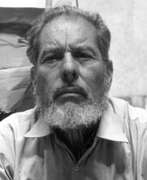

José Jesús Francisco Zúñiga Chavarría was a Costa Rican-born Mexican artist, known both for his painting and his sculpture. Journalist Fernando González Gortázar lists Zúñiga as one of the 100 most notable Mexicans of the 20th century, while the Encyclopædia Britannica calls him "perhaps the best sculptor" of the Mexican political modern style.
